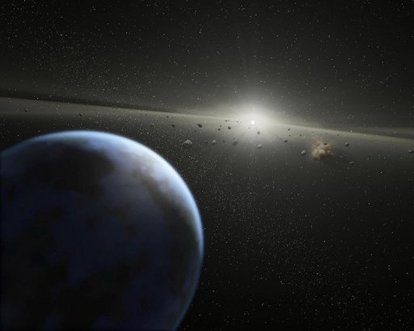Armageddon Looming? Tell Bruce Willis Not to Bother

When Bruce Willis used a nuclear bomb to save Earth from a giant asteroid in the movie Armageddon, the scenario had little science and a lot of fiction, physicists said on Tuesday.
Willis' nuke would have had as much impact on the rock as a cheap firecracker and was used so late that the planet would have been doomed anyway, they said.
"Our current level of technology is simply nowhere near sufficient to protect Earth from such an asteroid by this specific means of asteroid defense," according to a paper published by students at the University of Leicester, central England.
In the 1998 close-call blockbuster, Willis plays a deep-core driller sent by NASA to stop a Texas-sized rogue rock on collision course with Earth.
He lands on the asteroid and embeds a nuclear device that once detonated splits the projectile into two pieces that shave past on either side of Earth.
The research team said blowing up an asteroid of that size, about 1,000 kilometers (600 miles) in diameter, would require a bomb a billion times stronger than the biggest one ever detonated on Earth -- the Soviets' "Big Ivan" that was exploded at a test site in 1961.
In any case, the asteroid would have to be detected much, much sooner than in the film, the team writes in the university's Journal of Special Physics Topics.
The 18-day head start in Armageddon "would leave no time for Bruce to travel to the asteroid and drill into its center, let alone share any meaningful moments with Ben Affleck or Liv Tyler along the way," says the study, entitled "Could Bruce Willis Save the World?"
Tyler plays Willis' onscreen daughter and Affleck her love interest.
In reality, the asteroid would have to be detected and blown up 13 billion kilometers (eight billion miles) from Earth -- thus on the outer reaches of the Solar System -- to give the two halves enough time to alter their course and miss the planet.
It is not all bad news, though.
If the end of the world is penciled for December 21, 2012 -- the date said to be indicated by the Mayan calendar -- that does give us some months to do something about it.
"One possible alternative method would be moving the asteroid via propulsion methods attached to it," said 22-year-old co-author Ben Hall.
"What is certain is that most methods would require very early detection of such an asteroid and very careful planning in deriving a solution."



